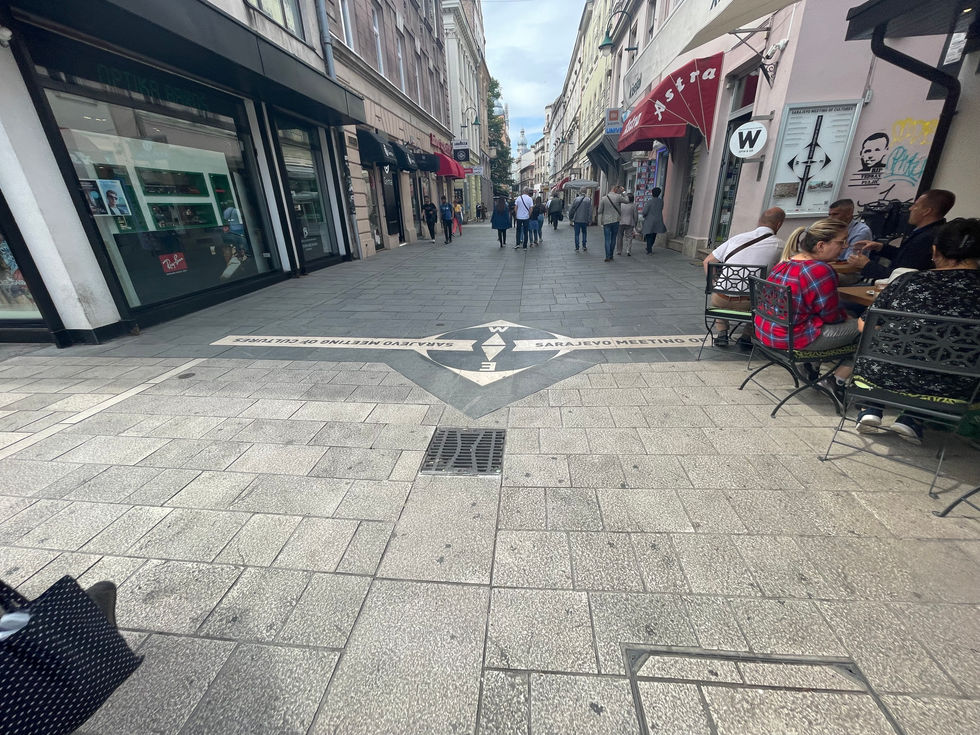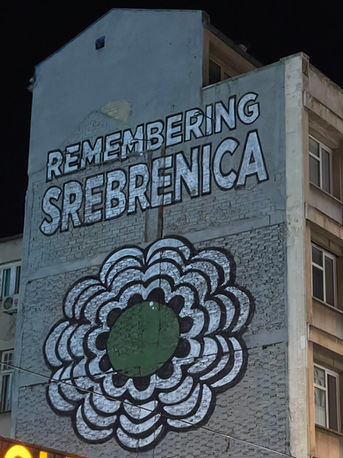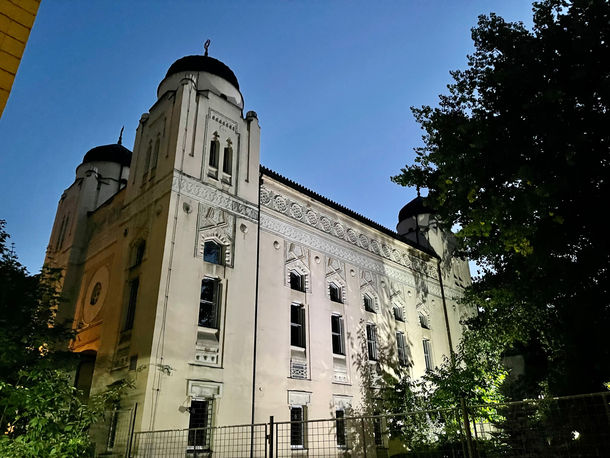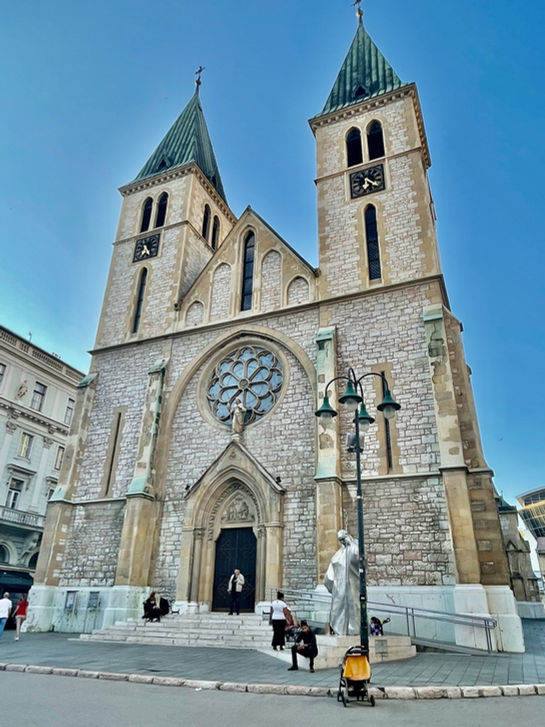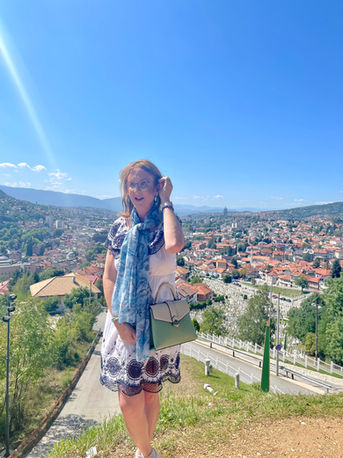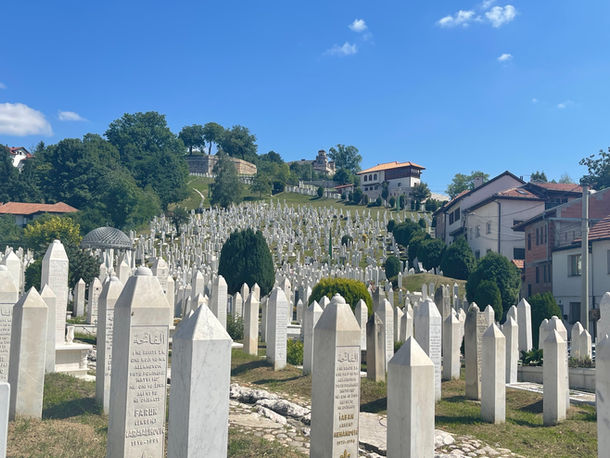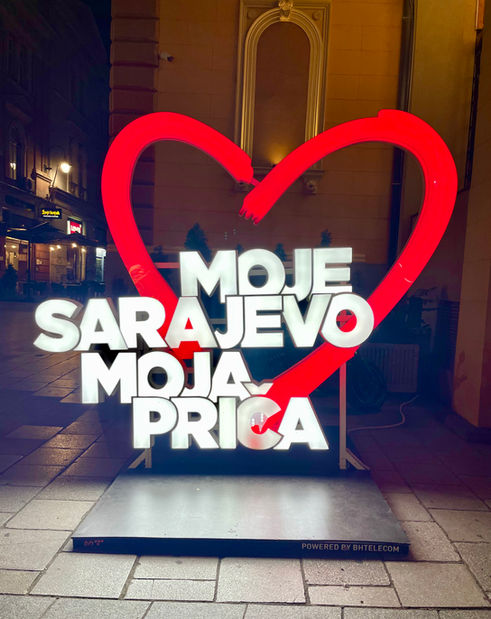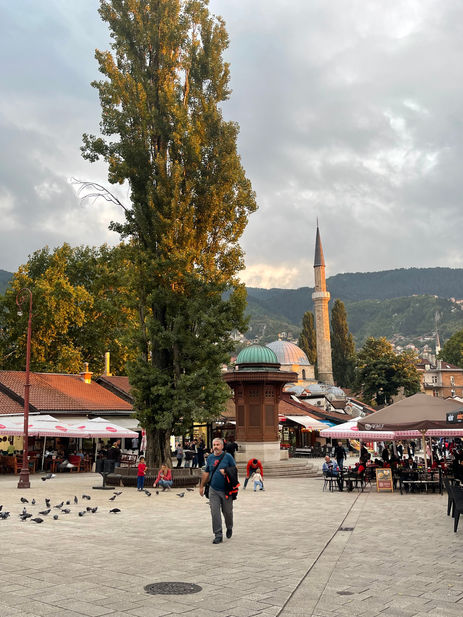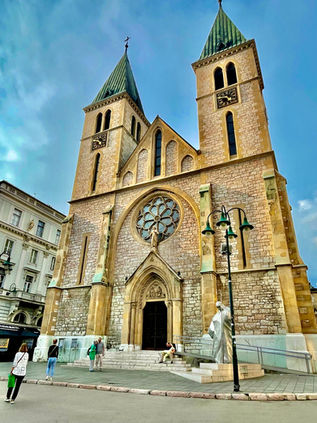Create Your First Project
Start adding your projects to your portfolio. Click on "Manage Projects" to get started
And I love her: Sarajevo
Travel Tale
2021
Sarajevo
A priest, a minister, and a rabbi walk into a bar… or so the old joke goes! But in Sarajevo, a more fitting version would be an Eastern Orthodox priest, a rabbi, a nun, and a young woman in a colourful hijab walk into a ćevapi (a Bosnian sausage) house. This little twist sums up Sarajevo in a nutshell—a city known as the “Jerusalem of Europe” for its vibrant mix of religions and cultures. It’s not uncommon here to see a girl in a bright hijab pass by a nun, followed by “the original men in black,” a phrase used lightheartedly by Eastern Orthodox Christians to describe their priests.
When I first arrived in Sarajevo in September 2021, I had no idea what to expect. It wasn’t as though I came without any knowledge—quite the opposite! I remembered the 1984 Winter Olympics, watching with my parents as American figure skater Scott Hamilton secured the gold medal. And, of course, the haunting memories of the Bosnian War: the brutal 1,425-day siege, the genocide, and the unimaginable suffering Sarajevo endured at the hands of Serbian nationalists. But even after reading books, watching documentaries, and consuming hours of news coverage, nothing could prepare me for the reality of the city.
The moment I stepped onto the famous pedestrian street, Ferhadija, Sarajevo’s energy hit me like a powerful mid-June thunderstorm. The sights, the smells, the sounds—everything rained down on me at once, overwhelming my senses in the most incredible way. This sensory overload was not unpleasant; it was more like a hallucinogenic trip brought to life. Every detail was vivid and extreme: the colours, the sounds, the people, the smells, and the city’s sheer power and presence.
Coming from Seattle, where every building looks like the same uninspired mixed-use development and the population feels segmented into either White, Asian, Indian, or homeless communities, Sarajevo was a revelation. After the pandemic lockdowns, mask mandates, and social distancing rules that made Seattle unbearable, this vibrant city felt like a spa day for my soul.
It was as if I had stepped from a grainy black-and-white film into full-colour 4K Ultra HD, complete with surround sound and smells. Ferhadija was like a deep breath of fresh air. I marvelled at the colourful Austro-Hungarian architecture mingling with the aging, bullet-riddled buildings from the war. Walking further down, the vibrant western buildings gave way to the low-rise Ottoman-style shops and mosques of Baščaršija. The two worlds meet dramatically at a spot called the Meeting Place of Cultures, marked by a plaque embedded in the pavement. This point perfectly symbolizes Sarajevo: a city constantly balancing the tension between East and West.
This tug-of-war is visible even in the way people dress. On one end of the spectrum, you’ll see women in full burqas or long black robes with hijabs, while on the other, girls wear Western-style clothing with hijabs—mixing both cultures effortlessly. And then, of course, there are the women who dress no differently than anyone else in Europe, creating a kaleidoscope of styles on the streets.
If the colors don’t make your head spin, the architecture will. Within a 100-meter stretch of Ferhadija, you’ll encounter four distinct places of worship. Towering above the street is the magnificent Sacred Heart Cathedral, a Gothic-style Catholic church. Just across the street, tucked among trees, stands the 19th-century Serbian Orthodox Cathedral of the Nativity of the Theotokos. To its right is the graceful Ferhadija Mosque, a masterpiece of Ottoman architecture. And if that’s not enough, just across the river lies the Ashkenazi Synagogue, its interior decked out in Moorish-style design. These religious traditions sometimes clash—not in violence but in sound. The church bells ring loudly, competing for airtime with the call to prayer from Ferhadija Mosque and other mosques scattered across the city.
And then, the smells… How I wish I could convey the scents of Sarajevo in words! But words would fail to capture the experience. Here, you don’t simply smell things—you feel them. In Russian, my second language, the word for “smell” translates literally to “feel a smell.” That’s precisely what it’s like in Sarajevo: you don’t just smell the heat of Baščaršija, the cigarette smoke curling from nearby cafés, or the fruity hookah vapour—you feel them. The scent of cevapi mingling with the rich aroma of Bosnian coffee is an experience that sinks into your soul.
To say it was love at first sight would be an understatement. It was more like love at first breath. As I walked through the streets of Sarajevo, a familiar tune began playing in my mind: The Beatles’ “And I Love Her.” It felt strange, as I hadn’t thought of that song in years. Yet somehow, Sarajevo had stirred something deep within me, pulling that melody from the vaults of my memory.
As my time in Sarajevo unfolded, I realized that life was imitating art. The second verse of the song captured my feelings perfectly:
She gives me everything / And tenderly / The kiss my lover brings / She brings to me / And I love her.
Sarajevo has given me everything—its culture, history, food, and soul. But, like any relationship, it’s also been challenging. The city’s scars and reminders of the war evoke deep sadness. And as much as I love it, I’ve had to wrestle with the ever-present cigarette smoke, especially in restaurants, nearly all of which are smoker-friendly. For someone used to smoke-free establishments, this has been tough. Sometimes, my only dining options have been McDonald’s or the high-end restaurant Klopa—neither of which makes for a perfect love story. Yet, like all great romances, Sarajevo and I always kiss and make up.
Despite its flaws, scars, and struggles, I know I will always love Sarajevo. As the final verse of “And I Love Her” goes:
Bright are the stars that shine / Dark is the sky / I know this love of mine / Will never die / And I love her.
And I will always love Sarajevo. Jako volim te, drago Sarajevo. Vidimo se. I love you, dear Sarajevo. Until we meet again.

